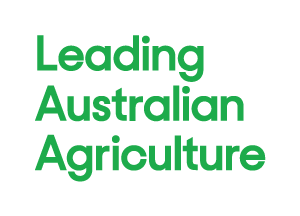PROFESSOR Ross Garnaut’s Final Report reinforces the National Farmers’ Federation’s (NFF’s) imperatives, highlighting the central role Australian agriculture can play in meeting the climate change challenge – provided the right policy settings are in place.
Responding to each issue under Chapter 22: Transforming rural land use of Prof Garnaut’s Final Report, below the NFF addresses the core concerns for Australia’s vital agricultural base.
Obstacles to agriculture becoming a covered sector within an ETSB
Prof Garnaut says:
“There is considerable potential for sequestering carbon through change in land and forest management and agricultural practices. However, their full inclusion in an emissions trading scheme (ETS) will require issues to be resolved regarding: (1) measurement or estimation and monitoring of greenhouse gas emissions and removals, and (2) consideration of changes to current emissions accounting provisions for these sectors under the Kyoto Protocol.
“More reliable and cost-effective ways to measure or estimate net emissions are needed in the land use sector. Without reliable estimation, it is difficult to include the sector in an emissions trading scheme.
“The transaction costs of full inclusion of agriculture in an emissions trading scheme would be high.
“For Australia, the large coverage issues in agriculture relate to accreditation of carbon in soils and vegetation.
“The effect of the scheme (ETS) on the agriculture and forestry sectors will depend on several factors:
* rules for their coverage or inclusion under the scheme.
* direct and indirect emissions intensities.
* availability and cost of mitigation options.
* availability of alternatives for commodity production.
“The over-riding idea should be one of providing incentives for net sequestration within a comprehensive carbon accounting framework.
“Full coverage of the agriculture, forestry and other land use sector would involve accounting for all greenhouse gas emissions and removal on managed land, including soil carbon, forests and wooded lands (regardless of the date of establishment) and life-cycle emissions from, and carbon storage by, harvested wood products.
“Resources should be directed, as a priority over the next few years, to overcoming gaps in emissions data and measurement issues for the agriculture, forestry and other land use sectors, in order to include all of the sector’s emissions in accounting and potentially in an emissions trading scheme. In addition, training will be needed to ensure that Australia has the skills needed for monitoring and verification.”
NFF Response: The NFF agrees. In fact, these imperatives – the obstacles, the considerations in relation to them and the progress needed before agriculture can potentially be covered by an ETS – reiterate the fact that agriculture can play a part in Australia’s climate change response, but not until these glaring problems are adequately resolved.
Problems with carbon accounting for agriculture must be resolved
Prof Garnaut says:
“If emissions removal processes are not recognised in accounting protocols, they cannot assist in meeting emissions obligations—which reduces the incentive to pursue them.
“The accounting framework for Australia’s emissions under the Kyoto Protocol is not comprehensive.
“Clear rules will be needed about how non-anthropogenic emissions, such as those caused by drought and fire, might be managed.
“There is considerable potential for sequestering carbon through change in land and forest management and agricultural practices. However, their full inclusion in an ETS will require issues to be resolved regarding… consideration of changes to current emissions accounting provisions for these sectors under the Kyoto Protocol.”
NFF Response: The NFF agrees. Clearly, for Australian agriculture to be adequately covered in any future considerations under an ETS, the international accounting rules must acknowledge the sector’s full life cycle – i.e. not only its emissions profile, but its storage of carbon in soils, crops and pastures. Until such time as reform of these accounting rules is achieved, any ETS including agriculture would see Australian food production bear a grossly disproportionate burden.
It may be worth examining alternatives for driving mitigation from agriculture
Prof Garnaut says:
“Given the magnitude and variety of difficulties associated with emissions measurement in this sector (agriculture), it is worth investigating whether other policies may deliver greater emissions reductions, at lower cost, than an offset regime.”
NFF Response: The NFF agrees. We may find that alternative market-based policies are more appropriate to delivering mitigations outcomes from agriculture. Given the impediments cited above, the NFF contends that food production is different, and must be viewed differently, in that, Australia’s climate change response must not be geared towards curbing food production. Rather, that incentive-based measures are more appropriate to support food production needs – both here in Australia and, increasingly, for international markets – and practical reductions in on-farm emissions.
Agriculture has a lack of abatement options
Prof Garnaut says:
“The agriculture sector as a whole has a lower known technological and economic potential to reduce emissions intensity than other sectors of the economy. There is currently a lack of well-quantified and well-costed mitigation methods available to agriculture.
“The agriculture sector lacks cost-effective mitigation options for some major sources of emissions.”
NFF Response: The NFF agrees. This is a crucial point. The capacity for agriculture to dramatically reduce its carbon footprint are limited. That said, Prof Garnaut has stated that Australia’s agricultural base is a lower emitter than other developed countries – largely owing to Australian farmers’ commitment to environmentally-sustainable farm practices. Given this commitment, the scope for making further cuts to emissions in Australia is limited. Therefore, Australia must ensure it doesn’t trade-off its effective, efficient and low emitting farm sector in trying to address the issue of climate change.
Opportunities exist from soil carbon
Prof Garnaut says:
“Australia is well positioned to further increase carbon dioxide removal by soil, due to the sheer size of its land mass and the ability of its farming sector to adopt new management practices.
“A range of biophysical, economic and social constraints must be overcome in order for this potential to be realised on a large scale, although it is already technically feasible. To be pursued on an optimal scale, carbon removal by soil would require recognition under an emissions trading scheme, a sufficient carbon price and potentially the assurance that those undertaking it will not be held liable for soil carbon emissions that result from non-anthropogenic release.
“The barriers to recognising carbon dioxide removal by soil could be overcome within decades, presenting soil carbon as a new commodity for landowners. Though the potential is not as great as in high-quality soil, removal by soil may offer an alternative to other forms of biosequestration in areas of low rainfall or scarce water supply.”
NFF Response: The NFF agrees. More work must be done to fully examine and understand the potential for storing carbon in soils, crops and pastures… not just trees. Further, pressure must be applied to international decision-makers to ensure that such practices are fully accounted for under the Kyoto rules.
There is a significant need for research and development into agriculture
Prof Garnaut says:
“There are promising research avenues for reductions in agricultural emissions. Large-scale, and widely shared, public good research in this area is warranted.
“Further research and development may help to identify new biological products that are appropriate for fertilizer production, and could also improve the efficiency of chemical fertilizers.”
NFF Response: The NFF agrees. A greater and more far reaching research effort is required to understand agriculture’s full life cycle, assess its net impact, and convert such findings into commercially-viable opportunities – both for carbon abatement and emissions trading options.
We must be careful that policies deliver an appropriate level of land use change
Prof Garnaut says:
“A large switch in land use toward production forestry would have additional consequences that might be negative (such as impacts on water supply) or positive (for example, mitigating dryland salinity and assisting with habitat restoration), depending on the type of forestry and the land use it replaces.”
NFF Response: While forestry can play an important role in sequestering carbon, we must strike an appropriate balance – economically, socially and environmentally. The NFF reiterates its imperative – and Australia’s best longer-term interests – that productive agricultural lands be dedicated to the vital function of food production. Again, trading-off food production – both here, and for overseas markets – would be a perverse result from an ETS.
Policies are needed to correct the regional community impact imbalance
Prof Garnaut says:
“Additional assistance measures that target particular sectors, industries or regions therefore are only likely to be appropriate where there are wider income distribution considerations, notably regional income effects.
“A significant proportion of the income distribution effects of climate change and climate change policy will come from changes in the industrial make-up of the economy over the longer term. Regional communities and industries are likely to be more vulnerable to these impacts than urban centres, due to their reliance on agriculture and other natural resource-based industries, and low levels of infrastructure stock. Regional communities, in particular farming regions, have already been subject to structural change to a much greater extent than metropolitan centres in recent history.”
NFF Response: The NFF agrees and is concerned that rural and regional communities will bear a disproportionate burden under an ETS – whether agriculture is covered or not. This must be acknowledged and reflected in the Australian Government’s policy response, with complementary measures to ensure the costs to Australians, wherever they live, are equitable.
“Marginal” agricultural land
Prof Garnaut says:
“Arid and semi-arid rangelands currently make up about 70 per cent of Australia’s land mass, or around 5.5 million km2… Considerable degradation of these rangelands has been caused by marginal sheep and cattle grazing… A carbon price of $20 per tonne would provide up to a tenfold increase in income for property holders in this region if current practices were replaced by land restoration through a strategic property management program.”
NFF Response: As the Australian Government has repeatedly recognised, the determination of what is marginal and not marginal in terms of agricultural production is an assessment best left to farmers. Indeed, what farmers produce, where and how they produce it, will be informed by the research and development effort needed to fully understand the impact of climate change on a region-by-region basis. We know from experience that farms, once considered marginal, which have been bought by other farmers who bring new farm systems, new crop varieties or new technologies to those properties have turned them into viable, productive lands once more. It is not the role of government to be making arbitrary assessments on what constitutes ‘marginal’ land.
Kangaroo production as an alternative option to beef and lamb
Prof Garnaut says:
“Australian marsupials emit negligible amounts of methane from enteric fermentation. This could be a source of international comparative advantage for Australia in livestock production. For most of Australia’s human history – around 60,000 years – kangaroo was the main source of meat. It could again become important.”
NFF Response: While the NFF has no problem with alternative meats, the reality is that kangaroo meat currently has a very limited market. Farmers will respond to marketplace demand, but the market (consumers) is not indicating that it will accept kangaroo meat in large quantities – let alone as a substitute for beef or lamb. Australian beef and lamb producers are meeting not only domestic, but global, demand. An ETS must be designed so that livestock production is not put out of business.
Australian agriculture as a high intensity emitter
Prof Garnaut says”
“Australia’s per capita emissions arising from agriculture are more than six times the world average, more than four times the Organisation for Economic Cooperation and Development (OECD) average and third highest in the OECD.”
NFF Response: Previously Prof Garnaut cited Australian agriculture’s low emitting farm systems. However, he has now raised a ‘per capita’ measure. Per unit of production, Australian agriculture is a world-leader in low-emission food production – leaving many of our international counterparts in our wake. Naturally, if you impose a per capita measure, Australia will be higher because we export over 60% of everything we produce. The per capita measure is, therefore, extremely misleading.
[ENDS]
For more information, see the NFF’s submission in response to the Australian Government’s Carbon Pollution Reduction Scheme Green Paper at: http://www.nff.org.au/policy/submissions.html[Submissions to Government]
You may also like
Biosecurity Protection Levy Senate Committee public hearing
Today the Senate Rural, Regional Affairs and Transport Legislation Committee holds the public hearing on the Biosecurity Protection Levy. Below is National Farmers’ Federation CEO, Tony...
NFF calls on Australian governments to declare war on Red Imported Fire Ants
The National Farmers’ Federation is calling on the Federal, state and territory governments to urgently ramp up the war on an invasive species that could slash agricultural output by upwards of 40%. The Senate Inquiry...
Applications extended for female leadership program
Women wanting to increase their leadership skills and contribute to narrowing the gender gap in agriculture still have time to apply for the National Farmers’ Federation flagship Diversity in Agriculture Leadership...





Add comment